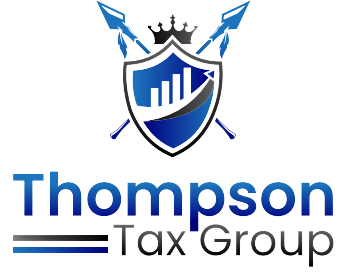
The Employee Retention Credit (ERC) is a tax credit introduced by the United States government in response to the COVID-19 pandemic. It was created to encourage businesses to retain their employees during periods of economic disruption. But what are the updates regarding this tax credit?
While the Employee Retention Credit (ERC) can provide financial relief for businesses, it’s important to be aware of certain warnings and considerations associated with claiming the credit such as eligibility and documentation, interaction with other relief programs, employee count and size, timing and filing requirements.
What is the Employee Retention Credit?
The ERC was initially established under the Coronavirus Aid, Relief, and Economic Security (CARES) Act in March 2020 and has undergone subsequent revisions and extensions through subsequent legislation. As of my knowledge cutoff in September 2021, the information provided here may not reflect the most up-to-date changes.
The key points regarding the Employee Retention Credit are as follows:
- Eligibility: The ERC is available to businesses that experienced either a significant decline in gross receipts or a full or partial suspension of operations due to COVID-19. Eligible businesses include employers of any size, including tax-exempt organizations, but certain government entities and small businesses that received Paycheck Protection Program (PPP) loans have certain limitations.
- Credit Amount: The credit amount is calculated as a percentage of qualified wages paid to eligible employees during specific periods. For 2020, the credit rate was set at 50% of qualified wages, up to a maximum of $10,000 per employee for the entire year. For 2021, the credit rate increased to 70% of qualified wages, with the same maximum per employee limit.
- Qualified Wages: Qualified wages differ depending on the size of the employer. For businesses with an average of 500 or fewer full-time employees in 2019, all wages paid during the eligible period qualify for the credit, regardless of whether the employees worked or not. For businesses with more than 500 full-time employees, only wages paid to employees who were not providing services due to COVID-19-related reasons qualify for the credit.
- Interaction with Other Programs: Originally, the ERC could not be claimed by employers who received PPP loans. However, subsequent legislation has allowed businesses to claim the ERC retroactively even if they received PPP loans, subject to certain limitations. However, wages used to calculate PPP loan forgiveness cannot be used again to calculate the ERC.
- Claiming the Credit: Employers can claim the Employee Retention Credit on their federal employment tax returns, such as Form 941. The credit can be used to offset federal payroll tax deposits, or if the credit exceeds the deposits, businesses can request a refund.
What are the Employee Retention Credit Warnings?
Now, we’re not going to talk so much about the credit itself, but more like warnings around the credit and things to be cautious about.
There are some requirements to meet to be able to qualify for these items, and anyone could reach out to us to see if they qualify or if someone in their payroll company typically will handle it. They can reach out to them if they qualify. If this has been something you’re considering, looked into, or have been contacted by, be very cautious because this is one of the on the IRS’s schemes list of businesses that are taking advantage of other businesses to help them claim this credit. This is called an ERC mill. These companies are just cranking out ERC’s over and over for various businesses all over.
The major disadvantage is that these mills just cranking out these employer retention credits and filing them on behalf of the businesses are only sometimes making sure you qualify for them. These companies charge such a large fee that they will say you qualify for it, take care of all the paperwork, submit it, expect you to pay their fee, but you in fact did not qualify for the credit, then you are left dealing with the IRS. Not to mention if you received an ERC and previously filed a tax return, you must now amend those past year(s) tax return(s).
For example a business owner ended up qualifying for the employer retention tax credit. They got $170,000 over the course of 2020 and 2021, a good amount of money, $170,000, from the IRS for the employee retention tax credit. Now the company that charged them $51,000 to do this. So 30% of what actually they received back from the IRS, they had to pay to this company.
What is the Issue Between the Employee Retention Credit Mills and the IRS?
The issue arises when the IRS reviews it. IRS is starting to review these more and more now as time passes, and they’re noticing that people are claiming this credit but need to actually qualify. And so what the IRS is starting to do is they’re reaching out to these companies. But the issue is they’re not reaching out to the companies that file the ERC, the employee retention, or the ERC mills, they’re reaching out to the business owners that asked for this credit. Now the IRS is going back and saying you actually didn’t qualify. We want all of our money back.
For instance, the above exmaple I mentioned got $170,000 in tax credits. The IRS is now reaching out to them saying, listen, we want our money back $170,000. Plus, we will charge you penalties and interest on it for one, filing this incorrectly, and two, for not paying us when we requested it right away. In this example the business owner must pay back the entire amount including what they paid the ERC mill.
